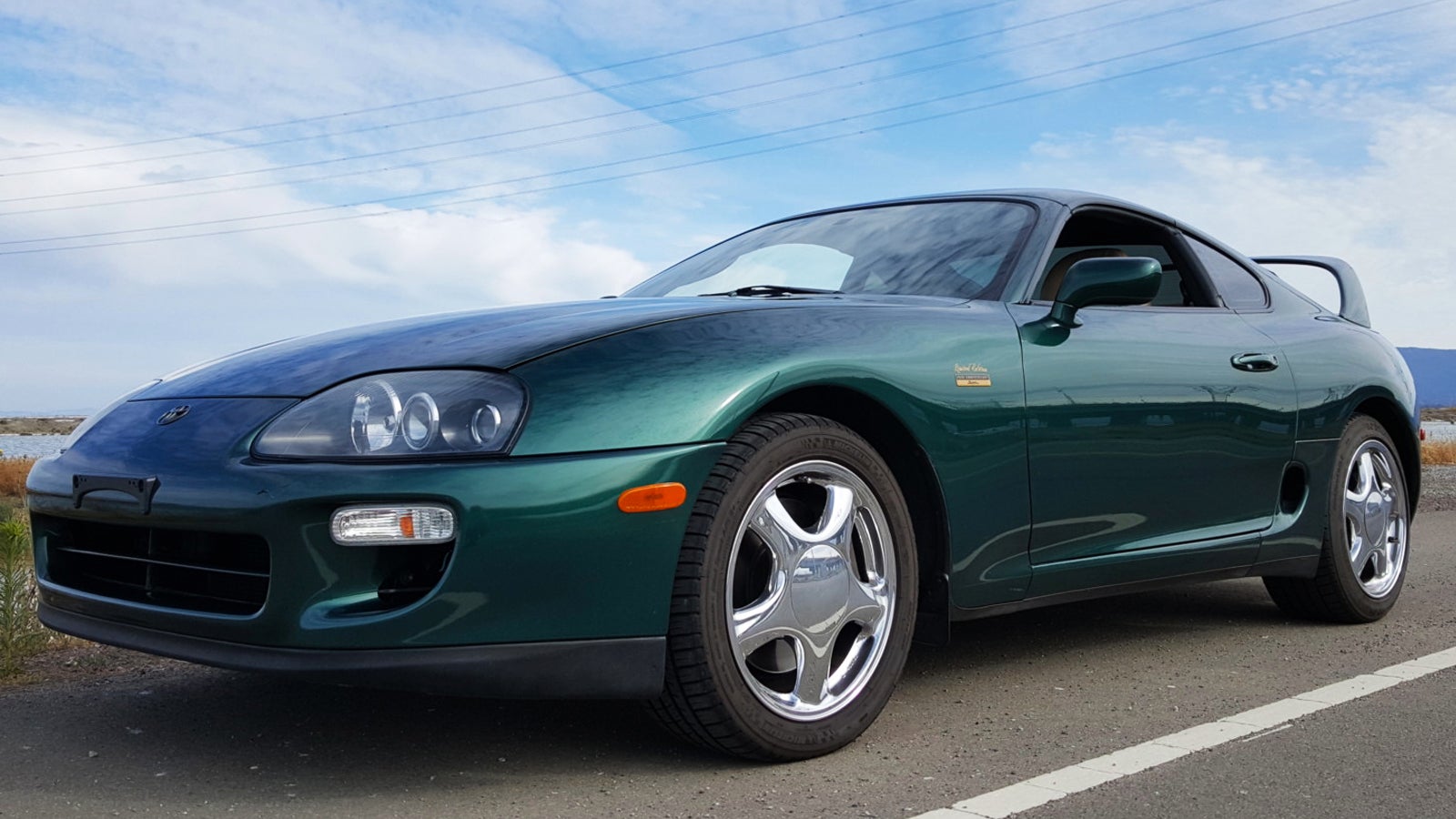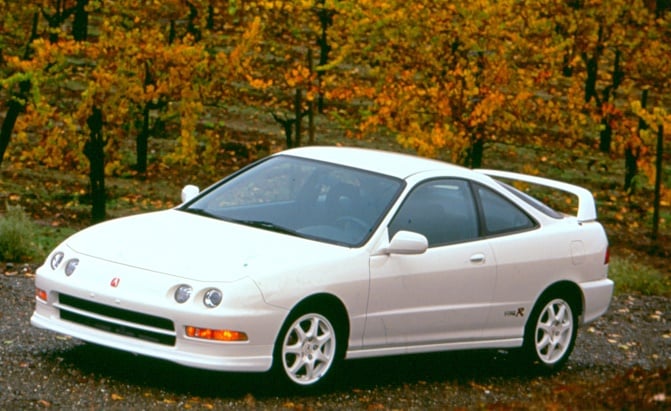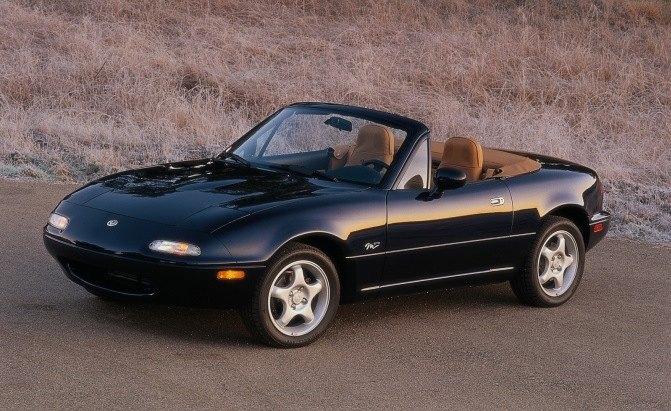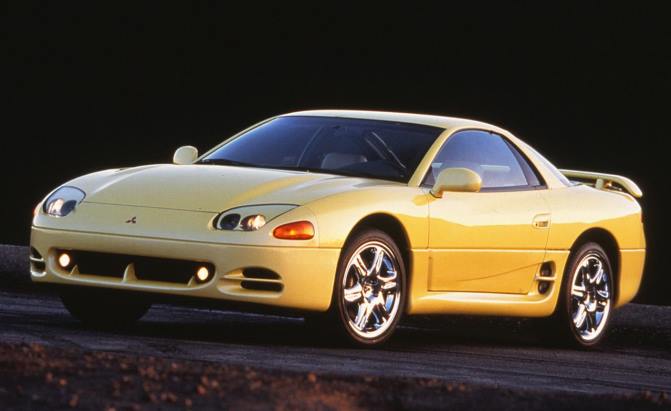AUTONEWS

10 Japanese Sports Cars of the '90s
There seemed to be an unwritten code that every Japanese automobile needed to have baked into its design. In Japan, dozens of enthusiast-focused vehicles hit the streets ranging from micro city cars to SUVs. Legends like the Skyline GT-R, Lancer Evolution, Impreza WRX STI and Stagea 260RS were born.
But you will not see any of those cars on this list, because this is the Top 10 list of Japanese sports cars we actually got in America during the '90s. True, a lot of the most amazing Japanese sports cars ever made it overseas, but we were not completely denied. Even if the Celica GT-Four and Civic Type-R never made it to our shores, there were still plenty of amazing Japanese sports cars we could drive during this time period. Their time here may have been brief, and most have disappeared like the dinosaurs, but like those beasts of old, we remember these legendary Japanese sports cars.

It's a Japanese sports car with 155 HP being sent to the rear wheels. No, this is not the 2016 Mazda MX-5 Miata, it's the Nissan 240SX. With a relatively low curb weight of 2,700 lbs. for a rear-wheel drive compact coupe, the 240SX came with a naturally aspirated 2.4-liter four-cylinder engine that of 1991-onward made 155 HP. Although that may seem a bit weak, in the early 1990s most compact cars were not making that much power and nearly all were rear-wheel dive like the 240SX.
With excellent handling and natural steering feel, the 240SX was a hit with the budget enthusiast. Twenty years later the 240SX lives on a darling of the drifter world for its small, lightweight, rear-wheel drive body shell.
 9. Mitsubishi Eclipse
9. Mitsubishi EclipseLong before the Mitsubishi Lancer Evolution and Subaru Impreza WRX STI made their way to North America, another turbocharged, all-wheel drive Japanese sports car was available - the Mitsubishi Eclipse. Like the Nissan 240SX, there were two generations of the Eclipse in the 1990s.
The first generation Eclipse could be an Eagle Talon or a Plymouth Laser as well. The most potent version of the first gen cars came with a 2.0-liter turbocharged four-cylinder engine making 195 HP that could power just the front wheels or all four.
For the second generation Eclipse only the Eagle Talon lived on its twin and the body received curvier, more modern sheet metal. The most powerful engine was a new 2.0-liter turbo four-banger that put out 210 HP and could once again be had with either front- or all-wheel drive.

8. Acura Integra Type-R
The Acura Integra Type-R may be the epitome of front-wheel drive performance vehicles. Although it is not the fastest FWD car ever made, it may well be the rawest and most engaging. With a 1.8-liter four-cylinder that made 195 HP and could scream up to 8,400 rpm, the amount of power produced per liter by the Integra Type R was staggering.
For those serious about performance, curb weight could be well under 2,600 lbs. by skipping options like air conditioning on earlier models. With a Helical LSD, less sound deadening, a thinner windshield, strengthened body structure and revised suspension, the Integra Type R was a compact race car for the street.
 7. Mazda MX-5 Miata
7. Mazda MX-5 MiataWhat has been said about the Mazda MX-5 Miata? Taking the British roadster concept of fun, engaging, open air motoring and adding Japanese livability and reliability, the MX-5 Miata was an instant hit. Starting with a 1.6-liter four-cylinder engine making 116 HP, the 1990 MX-5 weighed less than 2,100 lbs.
By then end of the decade, many special additions of the Miata would eat and power would steadily increase. By 1999 a special 10th anniversary edition could be had with a 1.8-liter engine making 140 HP, six-speed manual transmission, LSD and Bilstein shocks.

6. Mitsubishi 3000GT
The Mitsubishi 3000GT was a technological tour de force. Items available on the big 2 + 2 sports coupe included all-wheel drive, four-wheel steering, two-mode exhaust system, active aerodynamics and an electronically controlled suspension.
Throughout the 1990s, the 3000GT would go through three iterations, although the car's basic shape and style would remain. Initially, the most powerful 3000GT came with a 3.0-liter turbocharged V6 that made 296 HP and 306 lb-ft of torque. By the middle of the decade power had increased to 320 HP and 315 lb-ft. of torque to better match its Japanese competitors.
The biggest issue plaguing the 3000GT throughout its run was weight. Fully loaded, the Mitsubishi sports car nearly tipped the scales at 3,800 lbs. That may not sound that heavy by today's standards, but in the early 1990s that was quite portly.
 5. Toyota MR-2
5. Toyota MR-2In 1990, Toyota's little mid-engine sports coupe grew up to be sexier and sportier. Now significantly heavier, the MR2 did receive a big shot in power. Base models came with a 2.2-liter four-cylinder engine making 130 HP, which was not bad in a well-balanced car weighing less than 2,600 lbs. But those who wanted serious performance could step up to the turbocharged model whose 2.0-liter engine put out a powerful 200 HP.
Known to be a bit tail-happy, the MR2 Turbo could be very fast in the right hands. In a straight line, it was no slouch either the 60 MPH could be attained in around six-seconds. Overall, the Toyota MR2 was a great car for those who wanted an Acura NSX or even a Ferrari, but could not afford one.
 4. Nissan 300ZX
4. Nissan 300ZXLike a lot of Japanese sports cars, the 1990s ushered in a new era for the Nissan 300ZX. Larger, sexier and more powerful, the 'Z32' 300ZX as it was referred to could be with a 3.0-liter turbocharged V6 engine that made 300 HP and 283 lb-ft. of torque. Although these numbers do not match the Mitsubishi 3000GT's output, the Nissan 300ZX was significantly lighter with turbo models weighing a hair over 3,300 lbs.
The 300ZX could of course come without a turbocharged engine. And like a lot of sports cars of the time, the 300ZX could be a hardtop, T-top or a convertible. Unlike a lot of other cars, it could also be a pure two-seat sports car in a four-seat, 2 + 2 configuration.
With a well-tuned chassis, sport-orientated suspension and active rear steering, the 300ZX was one of the fastest Japanese sports car of the 1990s.

Although it was only offered for a few short years in North America, the third generation Mazda RX-7 was something special. The peak of the rotary engine, the 1991 Mazda RX-7 cam equipped with a familiar 1.3-liter rotary engine, but now featuring sequential turbochargers that gave it 255 HP and 217 lb-ft. of torque.
Those numbers pale in comparison to the other super Japanese sports cars, but the RX-7 was substantially lighter, weighing just 2,800 lbs. With a willing chassis, instant response from the rotary engine and balanced weight distribution, the RX-7 was a force to be reckoned with.
Sadly, the high price tag, poor fuel efficiency and horrible emissions doomed the third generation RX-7's fate on our shores shortly after it was introduced.

2. Acura NSX
The Acura NSX is another car that needs no introduction. Proving that supercars could be a livable, everyday driver, the Acura NSX turned the world of exotic cars upside down. Initially available with a naturally aspirated 3.0-liter V6 engine, the NSX made 270 HP (or 252 HP with an automatic transmission).
As the decade rolled on, the NSX received a 3.2-liter V6 engine that upped power to 290 HP. But like the Mazda RX-7 and Toyota MR2, the NSX was not about all-out power. It was a car set-up with amazing chassis response, near perfect steering and a human-machine interaction not found in many other cars.

1. Toyota Supra
It really is a tossup whether the NSX or Supra deserves to be at the top of this list. But with its monstrous 3.0-liter turbocharged inline-six engine, the Supra unleashed 320 HP and 315 lb-ft of torque. With power like the Mitsubishi 3000GT but a curb weight more like the Nissan 300ZX, the Supra was one of the fastest cars to come out of Japan in a straight line.
With great weight distribution, grippy tires and a well-tuned suspension, the Supra could dispatch with a corner just as easily. Sadly, by 1996 the Supra turbo monster was only available with an automatic transmission and the car would disappear altogether shortly after.
But while it was around, not much could keep with the Toyota Supra. By Mike Schlee

Nenhum comentário:
Postar um comentário